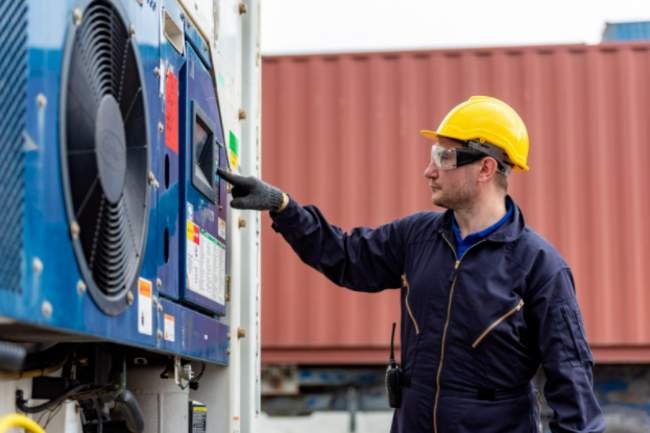Preventing Temperature Abuse Along Your Cold Chain

Food. Vaccines. Medicine. Life-saving pharmaceuticals. All of these valuable items are routed along the cold supply chain to help us live better lives. The cold chain—a version of the supply chain that focuses on transporting temperature-sensitive items and cargo—has a strong set of regulations to ensure the safe transport of these items. Unfortunately, temperature abuse can cause issues at any point along the route. Whether you’re transporting life-saving pharmaceuticals, food, or organs intended for transplant, getting temperature protection right is essential. Not taking precautions when transporting cold items is like avoiding owning health and life insurance: it’s only going to end in disaster. Here are some tips for preventing temperature abuse along your cold supply chain.
Temperature Abuse Defined
Temperature abuse has a few different operational definitions. In food service, the “temperature danger zone” is whenever food temperatures fall out of the range between 41 and 135 degrees Fahrenheit. Other issues, such as cross-contamination and unsafe handling contribute negatively to food safety. With cargo, the idea of a temperature danger zone is similar. Remember that one of the primary products transported along the cold chain is food. Cuts of meat and other products that can spoil while in the temperature danger zone need to be protected while in transit. The need for protection from temperature abuse becomes more prevalent when dealing with pharmaceuticals, vaccines, or organ donor tissue. All these need to be stored and transported at proper temperatures. Otherwise, they’ll spoil and can cause some serious problems for health, wellness, and safety for the consumer.
How It Happens
There are many, many things that can cause temperature abuse in the cold chain.
Sometimes it’s human error. Occasionally, it could be machined breaking down due to poor maintenance or unexpected failure. Power outages can happen from time to time. All of these are common denominators in cold chain interruptions. Other times, temperatures aren’t being monitored properly which can lead to bacterial growth, spoiled products, and losing a lot of money down the line. When food goes from farm to packing, it might be set out at improper temperatures for too long, ultimately leading to damage (and spoilage a bit further down the line). The cold supply chain requires immense documentation for everything. So, these temperatures should checked regularly and logged appropriately. Failure to properly document things along the cool chain can lead to problems as well. All in all, there are many vectors through which damage can occur and management must remain vigilant to avoid potential cold chain problems.
Cost And Damage Each Year
As if the spoiled or damaged cargo wasn’t bad enough, the cost and damage from poor cold chain logistics are significant. Food spoilage alone accounts for up to $35 billion in costs. That’s not even considering how much waste due to spoilage impacts other temperature-sensitive items like vaccines and medicine. Worse, these don’t just negatively impact businesses. They can lead to shortages or price increases that translated to the consumer. In the case of life-saving medicines and vaccines, or even donor organs tissue, damage along cold chain transport can be much more catastrophic. Every year, more supply lost along the cold chain, leading to the need for remote monitoring strategies and other mitigation efforts by the companies involved.
Other Preventative Measures
To prevent damage in the cold chain, you should observe some basic precautions. Some of the same precautions you’d take in the non-cold supply chain and warehouse storage/retrieval apply here. Start by ensuring packaging standards set very high. There shouldn’t even be an opportunity for packaging to break while in transit. Proper palletizing of items—securely and stacked appropriately—can prevent damage and impacts. Containers should sealed and designed to prevent moisture or condensation (both of which can spell bad news for any cargo).
Use technology to monitor your cargo at every step of the trip. Implement vibration loggers, shock lockers, and humidity sensors. Perform routine inspections and maintenance regularly for all of your fleet and their refrigeration mechanisms. Have a generator handy or a failover device in the event of a power failure. Finally, ensure your container’s temperature controlled. By taking a few steps early on to monitor, mitigate, and assess damage can ensure products like hvac parts through the cold supply chain.
Using Temperature Indicators
In addition to other preventive measures, the simplest thing you can do to stop time-temperature abuse is to use temperature indicators. These simple devices use a chemical to calculate how long a temperature fluctuation occurred while cargo is in transit. It can a brief, prolonged, or severe exposure. The data can used to assess damage and plan for the future. With a wide range of temperature sensitivities (as well as custom ranges), temperature indicators are one of the most crucial tools coal chain managers can use. In recent years, Spotsee Temperature Indicators have proven themselves time and again as the go-to temperature indicator for cold chain logistics. However, Using just a few of these on your cargo with a couple of different temperature ranges can Ensure high quality, safe transport, and unspoiled goods along your entire shipping route.

